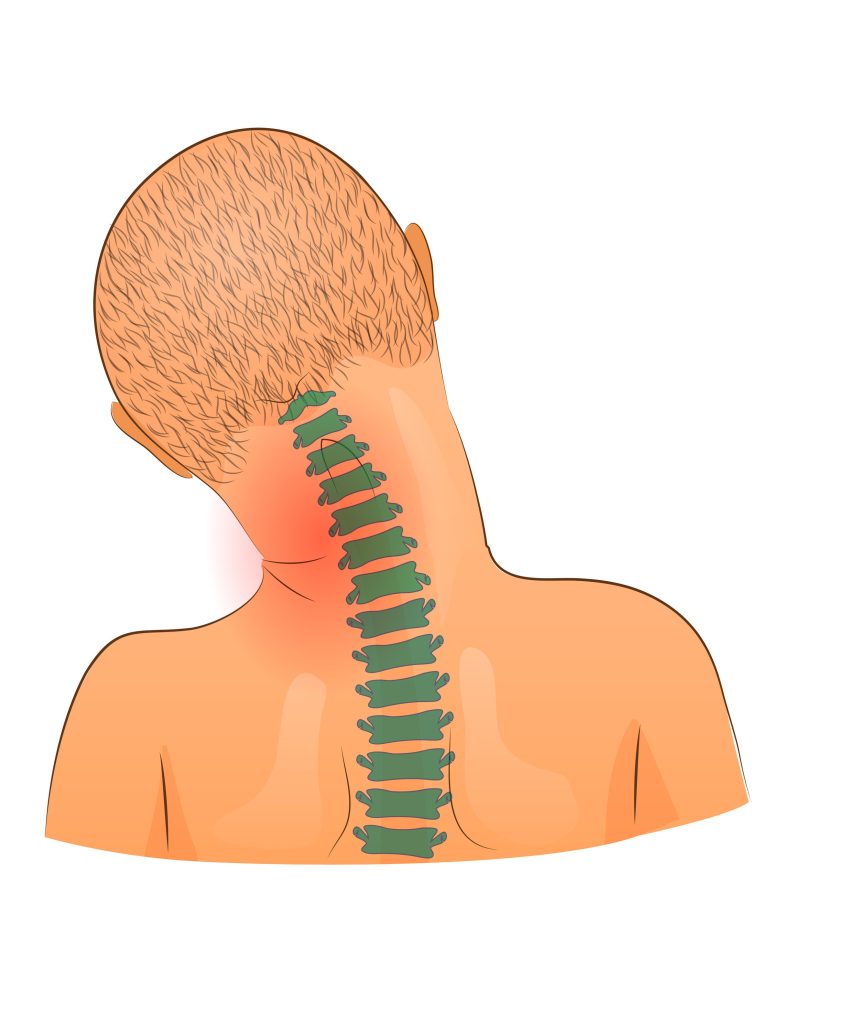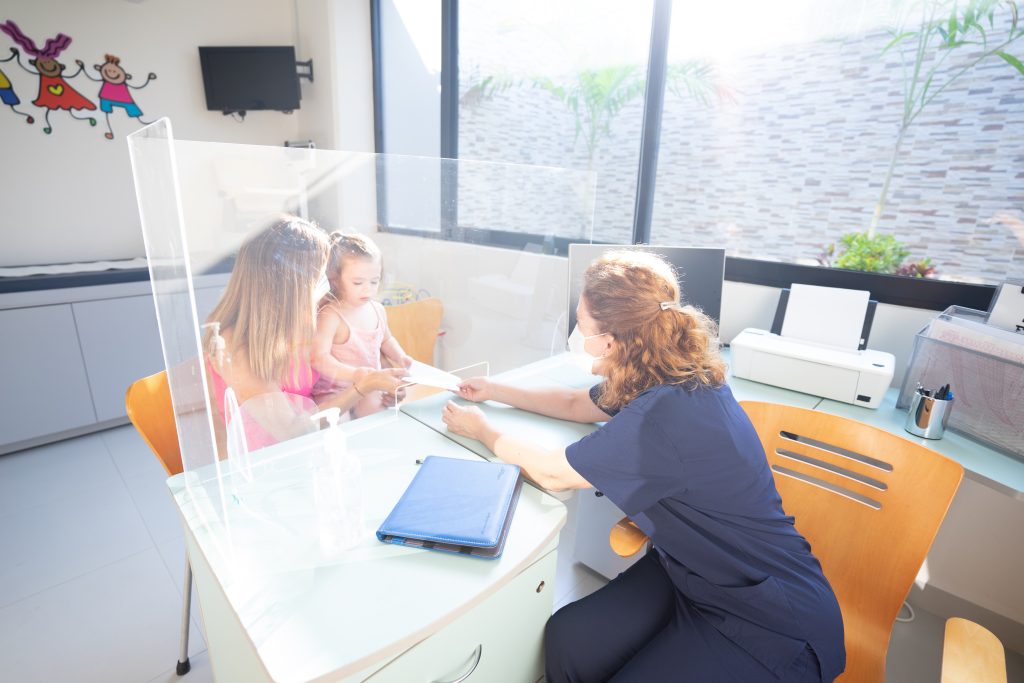Congenital torticollis is a condition that affects the neck and spine. It is a disorder in which the head and/or the spine don’t develop normally, which can cause problems with movement and posture. In this article, we will discuss the causes of congenital torticollis and the various treatments that are available.

What Is Congenital Torticollis?
Torticollis, also called “wryneck” is a disorder where a child’s head turns to one side. Infants frequently experience the onset of torticollis. The incidence of head tilt in boys and girls is comparable. The onset of symptoms can occur as early as birth or as late as three months later.
Most of the time, this occurs by either tense neck muscles or a rounded back of the head. Typically, a baby’s neck will first bend to one side such that the right ear moves closer to the right shoulder. And then rotate to the opposite side, looking over the left shoulder.
It is unclear why some infants develop torticollis while others do not.
Cause of Congenital Torticollis
Possible causes of congenital torticollis include:
- fetal distress due to uterine confinement or abnormal fetal positioning
- delivery methods like vacuum extraction or the use of forceps
These factors strain a baby’s sternocleidomastoid muscle. This thick, rope-like muscle connects the back of the skull to the collarbone on both sides of the neck. Babies may have trouble turning their heads if the SCM tightens from extra pressure on one side. The inability to freely turn the head hinders the child’s capacity to see, hear, and interact with the world around them. Therefore, torticollis can induce cognitive delays, a slowed development of body awareness, weakness, and balance issues.
Torticollis contributes to plagiocephaly, a condition characterized by flattening the back of the skull. The infant’s persistent head position causes the back of the skull to flatten and the forehead to bulge on the affected side. Children with torticollis and plagiocephaly may experience a number of cognitive issues if left untreated.
Signs And Symptoms of Congenital Torticollis
- When your baby is in an infant carrier or sleeping, its head bends to one side and turns to the other.
- Your baby has restricted neck mobility
- Asymmetric flattening of your baby’s head or face (positional plagiocephaly)
- Breastfed infants often favor one side over the other.
- While sitting up, your infant’s head has trouble staying neutral.
If you are concerned that your kid may have torticollis, consult your child’s pediatrician immediately.
Examination and Diagnosis for Congenital Torticollis
A physical therapist will evaluate your child. They will check their passive and active range of motion, muscular tightness, muscle strength, and gross motor skills. The physiotherapist will also look for plagiocephaly, hip dysplasia, and spinal issues. All of which can develop in children with torticollis.
The therapist will go through your child’s evaluation findings. Then, provide recommendations for physical therapy with you. You and your child will learn certain stretches and positional exercises to undertake daily at home.
Physical Therapy Intervention
Start treatment as soon as possible for the best chance of a speedy and complete recovery.
Parent/ Caregiver Education
Teach parents how to arrange and handle children that encourage active neck rotation toward the affected side. There is a good chance that providing parents with education, guidance, and support will help them relax and feel better.

Massage
Massage therapy aims to loosen tight muscles and improve mobility.
- Startup with a light massage.
- Use your fingers to run over the muscle’s belly and your thumbs to press softly into any knots in the sternocleidomastoid.
Manual Stretching
Maintaining proper stabilization and grip throughout the stretch is essential. Stretching preferences between parent and child will vary.
- Lateral Head Tilt. When the sternocleidomastoid muscle contracts, the head and neck tilt to the side of the contraction.
- Sit with your knees bent and your baby resting on your thighs to get this stretch.
- As you hold your baby’s right shoulder down, gently bend their head to the left, stretching the right side of their neck.
- Repeat four times, holding each time for 20-30 seconds
- Repeat this several times a day.
- Cheek-to-cheek Hold.
- You should hold the babies upright against the parent’s chest and neck, with the tight side of the neck facing up.
- You can help your child’s head rotate away from you by pressing your cheek against theirs and slowly pressing your cheeks together.
- Continue this for 5-10 seconds, then relax.
- Repeat this process five times.
- A mirror can help keep a baby’s attention and encourage them to look in a particular direction
- Neck Rotation. Torticollis causes the neck and head to rotate away from the tight side, so PT may recommend gentle stretches into rotation. You can rotate your child’s neck several times a day while sleeping or riding in a stroller.
- You can accomplish this by sitting on a chair and bending your knees so your baby can rest on your thighs.
- Get your baby’s attention with a toy, and then place it on the side where they can’t turn it.
- Put your hand behind your baby’s head and gently guide their gaze to the restricted side.
- Hold this position for 20 to 30 seconds at a time.
- Ideally, you should do this several times a day, ideally three to four times.
- Stop pushing immediately if the infant seems to be in pain or distress.
Range of Motion Exercises
Reduce restrictions on the child’s range of motion by increasing joint space and facilitating easier head movement.
- Passive Range Of Motion. Pay attention to head rotation and lateral flexion
- Aim to increase the mobility of the child’s head and neck.
- Mild cervical traction allows you to start range of motion exercises.
- Rotation (Chin to Shoulder)
- Cup one hand around the child’s head while placing the other hand on the child’s shoulder.
- Turn the child’s head gently so that their chin reaches your shoulder.
- Keep that position for the next few seconds.
- Stretch for as long as the child can stand it first, then work your way up to a longer duration.
- Side-Bending (Ear to Shoulder)
- Tilt the child’s head to one side while lying on their back on a cushioned surface (the floor or a therapist’s lap).
- Put your right hand on the kid’s left shoulder for left-sided stretches.
- You should use your left hand to provide pressure on the child’s head while you tilt the ear to the right shoulder.
- Keep this position for 10 to 15 seconds.
- Stretch for as long as the child can stand it first, then work your way up to a longer duration.
- Shoulder Depression
- Apply pressure down through the shoulders.
- Lower Trunk Rotation ( guided rolling )
- Move from supine to side-lying to prone using the pelvis as a pivot point.
- To get started, rock from side to side gently to gain speed.
- When your child has mastered the skill, you can gradually reduce your involvement so they can roll on their own.
Strengthening Exercises
- Tummy Time on Therapy Ball. The child can be encouraged to shift focus to the unrestricted side by using mirrors, toys, dogs, siblings, etc.
- With the child seated on the therapy ball, you can focus on trunk strength and stability by having them lean to the side and back.
- To promote head movement and arm weight-bearing during tummy time, prop the baby up on a soft incline wedge/ramp or pillow.
- Make it more challenging by using progressively smaller supports.
- A child’s natural tendency is to lean their trunk or fall to the longer side when sitting. If you put a toy on the shorter side, they will shift their weight to that side, strengthening the muscles on the weaker side.
- Incline Ramp
- Promote neck and head flexion and rotation.
- It’s helpful for both the upper and lower body.
Positioning
Your baby’s neck muscles will benefit from a gentle stretch when they are in the correct position.
- Roll the infant to one side before lifting them from the floor, crib, or changing table frequently.
- By facing your baby away from you and holding them in front of you, you can relieve pressure on their developing neck and head.
- Keep babies facing inward in newborn carriers until they have adequate head control and can correct themselves.
- Change up your child’s sleeping and playing surfaces. Reduce the amount of time spent in swings, bouncers, and other soft surfaces. It should be no more than 15–20 minutes each day to prevent the development of poor posture.
- Positioning a child on their side is a great way to get them off their back and into a midline play posture. You can help them maintain this position with a towel roll or a pillow.

Environmental Adaptations
- Place visually interesting objects on the other side of the room from where you plan to have your child spend most of their time.
- Arrange the child’s toys, so they are out of reach from the restricted area. This activity will encourage the child to look and reach in the opposite direction.
- While feeding your baby, try switching positions frequently to help stretch out their constricted side.
- To promote eye contact during side-by-side play, use a mirror.
Prevention
- General:
- When taking a stroll with your infant, position toys within easy reach but out of the baby’s line of sight.
- Position the infant on their stomach over your lap. Keep the toys high and to the less favored side.
- Arrange some toys in the middle of the floor or go down on your knees to face your infant. Get close to the infant from the opposite side they usually face. Keep playthings out of the way and up high.
- Lay your infant’s tummy on a sturdy surface (like the floor) with a thin blanket and some toys. Babies will benefit greatly from this position as it encourages them to elevate their heads to look at objects.
- Lie on your back with your baby on your stomach. Your infant can look you straight in the eyes with ease.
- Side-lying
- Initiate games involving both hands (this promotes midline alignment).
- Arrange the toys in a way that makes looking down more appealing. Beginning the roll to the stomach from here is simple.
- Sitting and Standing
- Utilize toys or visual stimulation to get them to turn their head to the “wrong” side.
- It is important to get your kid to use their non-dominant hand to look and reach.
- Activate midline play with both hands.
- Carrying the baby
- Scoop your hand under the baby’s chest, letting the baby’s legs straddle your forearm while you carry them horizontally.
- Across your chest, with the baby near your shoulder, facing toward you.
- At or near your shoulder.
A Note From Gulf Physio
We hope you’ve enjoyed learning about the subject matter above. This blog post is not a substitute for medical advice. The author cannot guarantee the accuracy of the information presented. If you have any questions or concerns, please consult a healthcare professional. All decisions and actions you make are your own. No one involved in making this resource is liable for its use.
A Note From Gulf Physio
We hope you’ve enjoyed learning about the subject matter above. This blog post is not a substitute for medical advice. The author cannot guarantee the accuracy of the information presented. If you have any questions or concerns, please consult a healthcare professional. All decisions and actions you make are your own. No one involved in making this resource is liable for its use.



